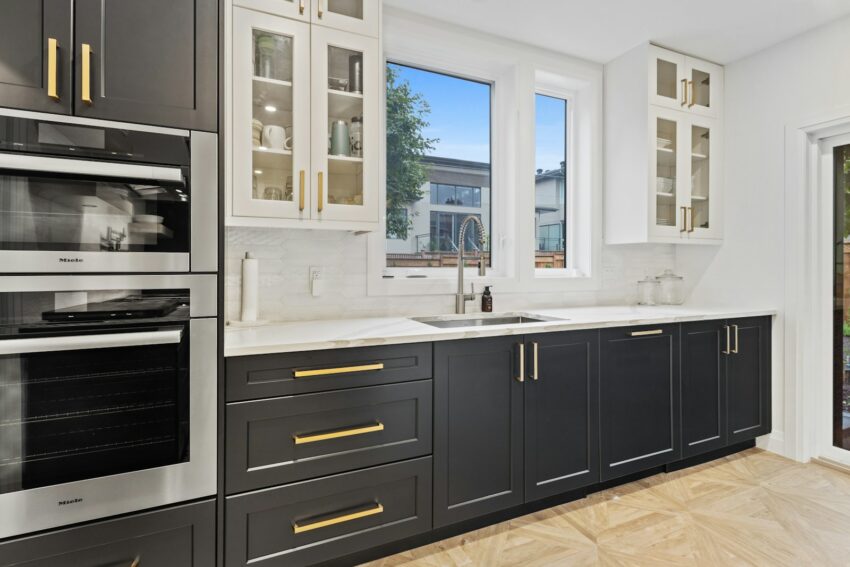Installing wholesale RTA cabinets can save both money and time, but many people want to know exactly how long the process takes. In a standard kitchen with about 10 cabinets, assembly and installation usually take one to two full days, depending on the layout, cabinet style, and experience level. This makes RTA cabinets an appealing option for those who want a faster project timeline compared to custom cabinetry.

The process involves more than snapping pieces together. The assembly of each cabinet can take 20 to 60 minutes, and larger or more complex units require extra attention. After assembly, installation adds several more hours since cabinets must be leveled, secured, and adjusted for proper alignment.
Understanding the time commitment helps set realistic expectations. With the right tools and preparation, the project can move smoothly and stay within a manageable schedule. This article breaks down the typical time frame, key factors that affect installation speed, and practical tips to make the process more efficient.
Time Required to Install Wholesale RTA Cabinets
Installing wholesale RTA cabinets takes more than just assembly. The total time depends on the size of the kitchen, the layout, and whether the work is done by a homeowner or a professional crew. Smaller kitchens can be completed faster, while larger or more complex spaces require extra steps.
Average Installation Timeline for Standard Kitchens
A standard 10×10 kitchen with both upper and lower cabinets usually requires 2 to 3 full days for installation. This includes assembling each unit, securing cabinets to the wall studs, aligning frames, and attaching hardware.
Wall cabinets often take longer to mount because they must be leveled and supported before fastening. Base cabinets are faster to set up, but still require careful adjustments to keep countertops even.
Simple wall units can be assembled in about 10–20 minutes each, while base cabinets may take 20–30 minutes. Larger pieces, such as pantry cabinets or corner units, can add extra time. A homeowner should expect 10–15 hours of actual labor for an average kitchen.

Factors Affecting Installation Duration
Several factors influence how long the process takes. Kitchen size is the most obvious—more cabinets mean more assembly and installation time. A small galley kitchen may take a day, while a larger open layout may stretch into three or more.
The cabinet type also matters. Standard wall and base cabinets assemble quickly, but tall pantry units, oven housings, or Lazy Susan corner cabinets add complexity. Extra trim, fillers, and molding also extend the timeline.
Experience plays a major role. Someone familiar with tools and cabinet assembly will move faster and make fewer mistakes. On the other hand, beginners may need extra time to review instructions and correct misalignments. Buying unassembled kitchen cabinets wholesale can save money upfront, but the tradeoff is the extra labor required to put them together.
Professional vs DIY Installation Time
A professional crew usually completes a standard kitchen in 2 days, sometimes less if the layout is simple. They work efficiently, have the right tools, and know how to handle uneven walls or floors.
For a homeowner, the same project often takes longer. A DIY installer may need 3 days or more, especially if they work alone or only part-time. Time is also added for learning the assembly process and double-checking measurements.
Hiring professionals costs more, but it reduces errors and speeds up the project. DIY saves money but requires patience. In some areas, homeowners can purchase RTA kitchen cabinets wholesale and either assemble them personally or pay a contractor for installation, depending on their budget and schedule.
Key Considerations for Efficient RTA Cabinet Installation
Successful installation depends on preparation, the layout of the kitchen, and the quality of the cabinets themselves. Each factor affects how smoothly the process moves and how long the project takes from start to finish.
Preparation and Planning Steps
Good preparation often saves hours during installation. Homeowners should first clear the workspace and remove any old cabinets, countertops, or wall fixtures. A clean and open area allows faster progress and reduces mistakes.
Accurate measurements matter most. Walls, floors, and corners should be checked for level and square. Small adjustments with shims or fillers prevent gaps later. Marking stud locations before lifting cabinets also helps speed up the process.
The right tools also make a difference. A drill, level, stud finder, clamps, and cabinet screws should be ready before work begins. Reading assembly instructions in advance avoids confusion during installation.
Finally, organizing cabinet parts and hardware by size or type prevents wasted time searching for pieces. A clear plan with step-by-step order creates a smoother workflow.
Impact of Kitchen Layout and Design
The design of the kitchen directly affects how long the installation takes. A standard L-shaped or straight-line kitchen usually installs faster because cabinets follow simple runs.
More complex layouts, such as U-shaped kitchens or designs with islands, require extra measuring and adjustments. Corner cabinets, Lazy Susans, and tall pantry units also take longer to set in place.
Wall conditions also matter. Uneven walls or floors force additional leveling, which extends the timeline. For example, a 10×10 kitchen with straight walls may take two to three days, while a larger or irregular layout may push the project longer.
Cabinet spacing, appliance cutouts, and trim details add more work. Careful planning of these design elements reduces delays during the actual installation.
Choosing Quality Cabinet Manufacturers
The choice of manufacturer influences both assembly time and final results. Cabinets made with thicker plywood and solid construction assemble faster and hold up better than thin particleboard.
High-quality RTA cabinets often come with clear instructions, labeled parts, and pre-drilled holes. These features cut down on errors and speed up installation compared to cheaper alternatives.
Some manufacturers also offer soft-close hinges, drawer glides, and consistent sizing. These details not only improve function but also reduce adjustments during setup.
Buyers should compare wholesale options carefully. While pre-assembled cabinets save time, quality RTA cabinets from well-regarded manufacturers balance cost, durability, and ease of installation.
Conclusion
RTA cabinets can be installed in a standard kitchen within a few days, but the exact time depends on the number of cabinets, the layout, and the installer’s skill level. Each cabinet usually takes 30 to 60 minutes to assemble, and installation adds extra time.
For a typical kitchen, the full process often ranges from two to four days. This includes assembly, placement, leveling, and securing the cabinets.
Homeowners who want faster results may hire professionals, while those with DIY experience can save on labor costs. The choice depends on budget, schedule, and comfort with hands-on work.
In the end, RTA cabinets offer a practical balance of cost, quality, and flexibility for most kitchen projects.
